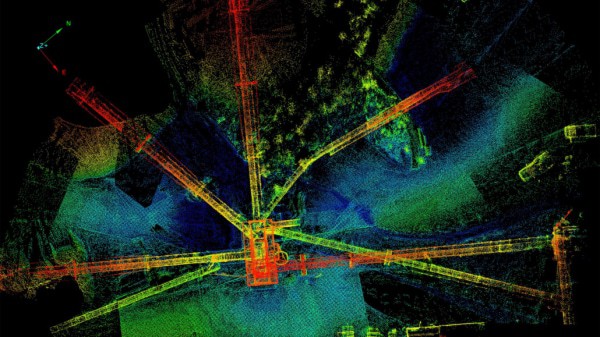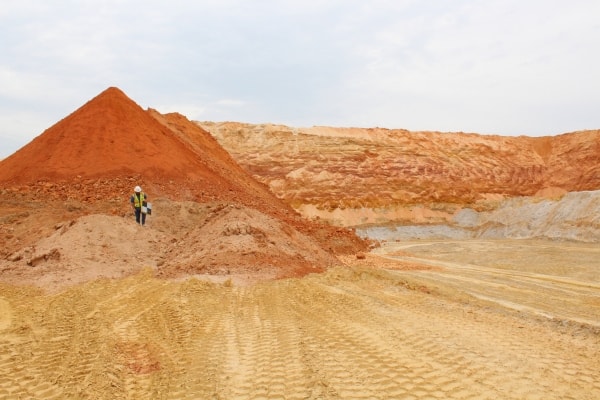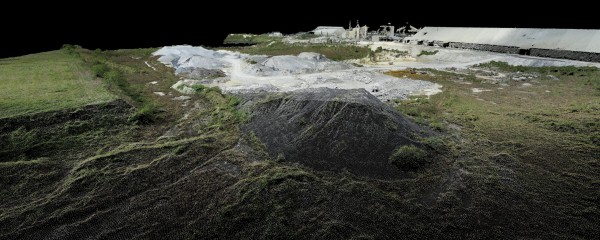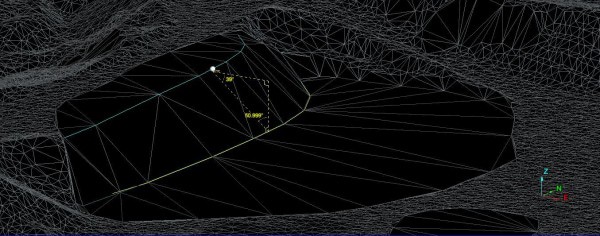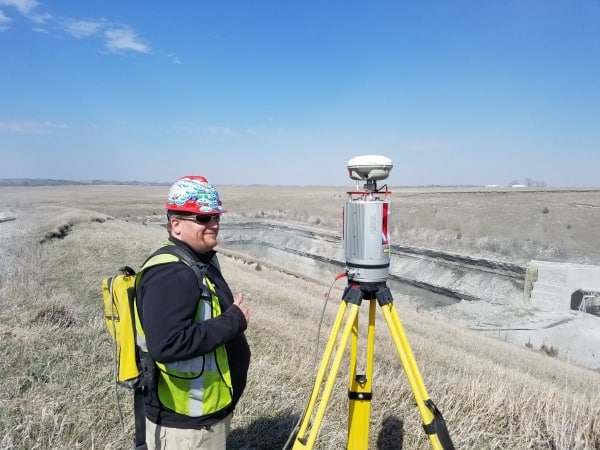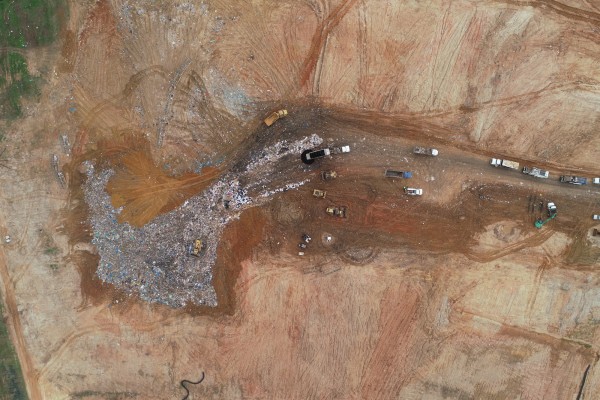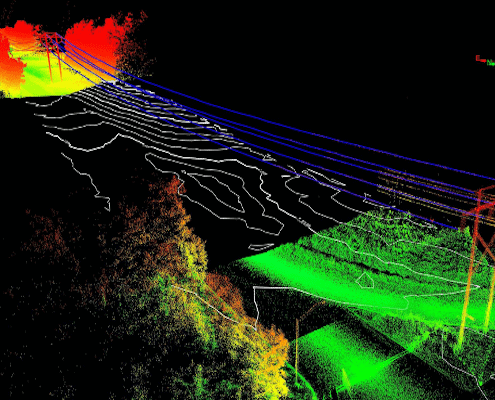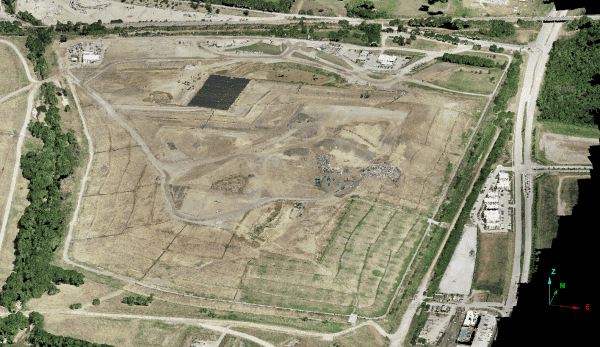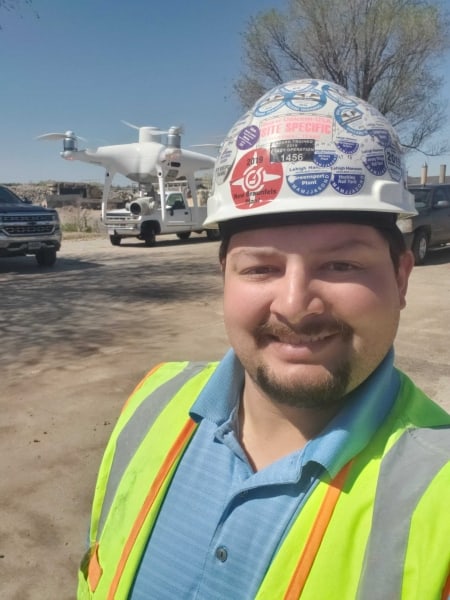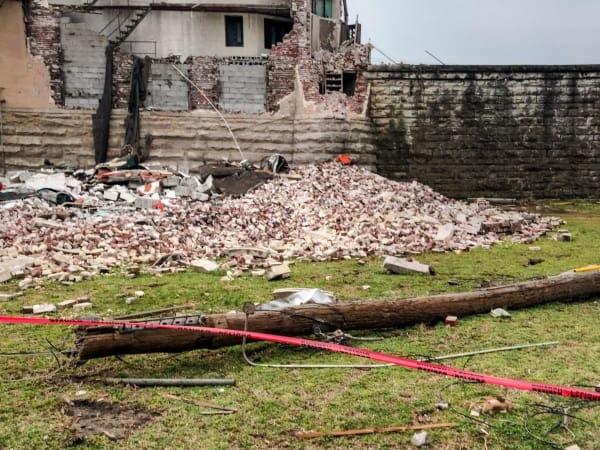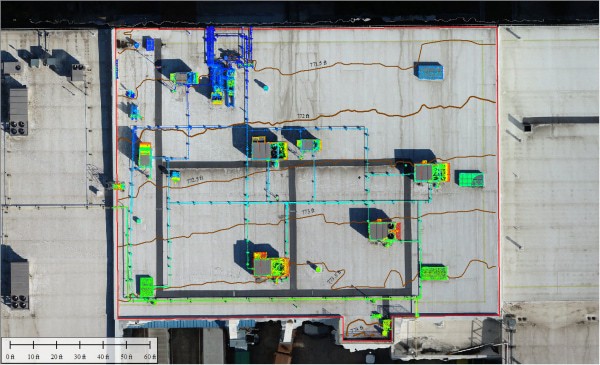Landfill management is a tough job that often requires creative thinking.
To the average person, this isn’t so obvious. After all, how fussy can solid waste be?
The industry professional, however, understands that solid waste can in fact be a fussy thing, especially at scale, especially over the lifetime of a landfill.
Previously, we took a look at the technology revolutionizing landfill management. Now, let’s take a look at some of the companies pushing those frontiers.
Here are 10 that deserve special recognition.
BiOWiSH and Gulf Scientific Gateway Help Control Waste Odors for Pilgrims in Saudi Arabia
If you’ve even been to a music festival, a state fair or even an RV park, you know how much trash mobile groups of people can create.
That’s long been a problem in Saudi Arabia, which sees some 2 million pilgrims every year during the annual Hajj pilgrimage. With crowds of that size, it’s not enough to simply have ample garbage trucks and waste sites — the Saudis do. At that size, even getting to all of the trash receptacles in anything close to a timely manner is impossible.
The team at BiOWiSH Technologies in Cincinnati explains:
“Large garbage trucks are available and waiting to remove the garbage from the bins, but they cannot get into these spaces that are congested with pilgrims. The religious travelers throw trash into big bins and since it cannot be removed promptly, it causes odors. The trash attracts flies.
“To elaborate, large garbage trucks are used at the end of the five days. The infrastructure has 1400 small compactor units distributed throughout the area of Mina. Garbage bags are dumped into these and the compactors crush them. At the bottom of these, liquid leaches out and generates gases such as hydrogen sulphide and ammonia. These have noxious odours.”
So, in 2014 one of BiOWiSH’s distributors, Gulf Scientific Gateway in Qatar, began to spray the trash compactors with BiOWiSH’s 100-percent natural products to control those odors. That way, the problem of odors and flies could be tackled at specific hot spots. The theory was this would reduce the flies the trash would attract, and thus the pesticides Hajj organizers used in the past to control the flies.
Saudi authorities reported the pilot program was a success. “The use of pesticides was reduced considerably according to the Hajj operations management team,” said Gulf Scientific Gateway’s Dr. Azahar Iqbal. “They also noticed a significant reduction in medicines given out by the Kingdom for coughs and infections.”
Waste Management Turns Methane Into Fuel in Kentucky
Numerous companies around the world have understood the potential for waste as a fuel, but few companies have the resources of an organization like Waste Management, which in February announced it would begin to harness methane emissions at a Louisville area landfill site and turn it into fuel.
WM public sector manager Andy Reynolds tells local news station WDRB that the company actually burns off the methane gas emission in a flare, and that WM is investing $30 million in technology that would put that energy right back into natural gas pipelines.
He estimates that the natural gas that could be harvested from a single landfill every day would be enough to power 12,000 homes.
TriAD Does the Necessary Legwork to Get Commercial Landfill Client Compliant
Sometimes, however, big wins in the waste management world don’t come via technological breakthroughs or innovative thinking. Sometimes, progress is the result of having smart people working diligently to understand and comply with regulations.
Take TriAD Environmental Consultants in Nashville. The team there works with landfill developers every day to conduct subsurface investigations, prepare all of the plans and estimates necessary to secure permits, and pull together specs and construction plans to ensure their clients’ bids are successful.
That’s a lot of hard work that often goes unrecognized. But as a result, the developers TriAD works with can bring ignored or forgotten landfill sites into the fold and apply industry best practices to ensure those sites remain safe for their communities.
Wasteserv in Malta Spearheading European Campaign to Improve Landfill Regulations
In a similar vein, Maltese waste management operator Wasteserv announced in January it would be working with other waste management companies and regulatory agencies in the European Union to share local landfill management best practices and to create new economic opportunities.
Wasteserv naturally has its work cut out for it — the company operates on a small Mediterranean island nation that simply doesn’t have the space for large landfill sites. Creativity must be baked into any waste management approach there, and Wasteserv hopes to share those ideas with partners from Cyprus, Belgium, the Netherlands and Spain.
“As a result of landfill management projects, the recovery of resources as well as land recovery is increased while future environmental hazards can be avoided,” the company tells local news outlet Malta Today. “Moreover, landfill management projects generate economic development opportunities and create new green jobs, all within the context of an EU-wide transition to a resilient, low-carbon, circular economy.”
Croxley Recycling Helps Remove Hazardous Material from Landfills in South Pacific
In the same way as Malta, the South Pacific island nation of Vanuatu has to be creative with its waste management practices. But because of local habits, some 80 percent of what ends up in local landfills is actually recyclable, says the Secretariat of the Pacific Regional Environment Programme (SPREP).
So, in 2013 the municipality of Luganville (the country’s second largest city) partnered with New Zealand recycling company Croxley to help create a new local habit: Recycling printer cartridges. The municipal government began to place cartridge drop bins all around the city and actively encouraged residents to get in the habit of using them.
It’s a small step, but a necessary one to initiate bigger conversations around recycling and waste management. “The goal of this new initiative is to raise awareness and understanding of hazardous waste among the population and to foster environmentally-responsible behaviour in customers whereby they return empty cartridges when purchasing new ones,” SPREP writes.
“The programme encourages separation of waste at source and demonstrates to residents and businesses that the Municipality is ‘walking the talk’ by taking the initiative to manage hazardous waste streams.”
Republic Services Contributes to Georgia Power Grid With Landfill Gas-to-Energy Project
Republic Services is another company that recognizes the gas-to-energy potential of landfills, and in 2016 the company announced a project that would tap into the emissions at three Georgia landfills to generate 24.1 megawatts of electricity, which would otherwise have been generated by dirtier fuels.
“According to the EPA, 3 MW of renewable energy generated by landfill gas-to-energy projects is equal to preventing the carbon emissions emitted by the use 16.6 million gallons of gasoline,” Jessica Lyons Hardcastle at Environmental Leader writes. “Based upon EPA calculations, this project prevents carbon emissions that would otherwise be emitted by the use of more than 132 million gallons of gasoline.”
Enviro Cover Helps a Canyon Fill Site in Los Angeles Design a System for Daily Coverage
Sometimes, something as ostensibly simple as covering a landfill requires creative solutions because of topography of the site. Take the Puente Hills Landfill in Los Angeles, the country’s largest, where the daily cover might need to be strong enough to hold up for days or weeks at a time — but still made of materials that keep the cover within budget.
After a few other companies took their best shots, the team at Enviro Cover System came up with a workable solution: A polyethylene film designed to last for four weeks, and unfurled with a deployer that unrolls and secures the film in place. Afterward, the film is covered with mounds of soil that serve as ballast.
With this system, the site managers at Puente Hills can manage odors, scavengers and disease vectors for weeks at a time, even in wet conditions.
Denmark’s Schmidt Hammer Lassen Architects Helps Build Largest Waste-to-Energy Plant in the World in Shenzhen
Now, let’s scale the waste management challenge up by a factor of 50.
That’s roughly how much bigger China’s Shenzhen East Waste-to-Energy Plant is than the Puente Hills Landfill. At such a scale, site managers need more than durable covers; they needed a team of architects to devise a way to contain the waste in a single place, where it could be turned to energy.
Enter Schmidt Hammer Lassen, a Danish architecture firm. The SHL team partnered with Gottlieb Paludan Architects to create this award-winning design:
Shenzhen East Waste-to-Energy Plant_SHL_GPA from SHL Architects on Vimeo.
Geosyntec Helps Stabilize SoCal Airport Built On Top Of Former Landfill
Here is a good example of where the lifecycle management of landfills comes into play. At some point, many landfills are covered and begin new lives as parks or nature preserves.
Or in some cases, they become the sites where airports are built, as is the case with McClellan-Palomar Airport in Carlsbad, California. Because that ground is now supporting such critical (and heavy) infrastructure, the ground needs to be monitored frequently to check for any problems or changes.
Recently, the County of San Diego Department of Public Works sought to upgrade the airport with a new terminal, a pedestrian bridge, additional parking and other necessary improvements.
That’s where Geosyntec Consultants came in. They helped airport management with subsurface, geotechnical investigations to evaluate everything from thermal output to the site’s resilience during an earthquake.
You might not normally connect landfills with the safety of air travelers, but in this case that was precisely what was on the line.
Agru America Turns Connecticut Landfill Into Solar Power Plant
Methane-to-gas conversion isn’t the only way to harvest the energy-generation potential of a landfill. In 2011, the managers at the Hartford Connecticut Landfill sought to devote some of the site’s 35 acres to generating solar energy.
For that project, they tapped Agru America, whose ClosureTurf product appeared a viable option as something that could cap the landfill and support solar arrays — but the company had never tried this before.
It proved to be a better alternative than vegetation cover, however, because it wasn’t susceptible to erosion, and it also left room for drainage layers so water could run down the site without disrupting the foundations that support the solar panels.
Today, a five-acre solar array sits at the pinnacle of the old landfill, and at capacity it produces enough energy to power 1,000 homes.
images by: 1103489, tpsdave, Dimitris Vetsikas




